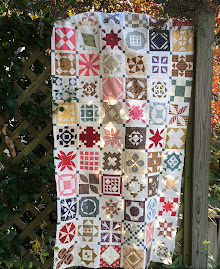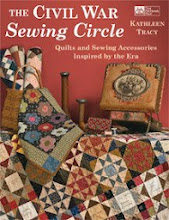"You cannot plow a field by turning it over in your mind."
You will all be happy to know that I finally finished up the manuscript and quilts for my fourth quilting book (Yay!), which will come out about a year from now.
Did you ever wonder about what's exactly involved in getting a quilting book published? I get asked about it often--how did you even get a book published (LOL, I'm sure she didn't mean it that way) and why does it take so long? There's a lot that goes on behind the scenes and it's quite an interesting process, getting a book from concept to finished product. Nothing gets done without a lot of hard work and a fair amount of stress, though.
I've had a headache for days (weeks?) and haven't slept well for a really long time, with so much to do. My daughter made me a bracelet to make me feel better. They look like worry beads to me. What, me, worried?? Quilting should be FUN, not stressful! I feel sort of like I just gave birth: exhausted, but gratified. My family will be so glad it's over . . . .
Mom, are you done yet???
I'm sure many of you have plenty of great ideas for a book and that's where it all starts. For me, this last time the idea was triggered by something I came across in the research process while working on one of my other books. I get a lot of ideas, but the main idea usually takes a while to germinate and develop. If it just does not go away, keeps nagging at me, day in, day out, then I know I have to do something about it. Like, take the idea out of my pocket and look at it closely and then ask myself if I can possibly create projects that blend with it. Most importantly--will anyone else find the topic as fascinating as I do? Can I design quilts to go with the topic? Can I really turn it into a book? Will anyone buy it?
For some quilting book authors, the book begins with an idea for a quilt pattern they are driven to design and the rest of the patterns follow and surround it. For me, the projects always come after the basic premise or theme of the book is developed. Sometimes I come up with the title first and then the rest follows. Sometimes I get a paragraph stuck in my head that keeps getting longer and longer.
Once you're set on your idea, the next step is to write a proposal (the outline of your idea) and submit it to a publisher. For the book I just finished, after the idea was sparked, it took me several weeks to get the proposal together, write an outline of the chapters, draft an introduction and design some quilts before I sent it to my publisher. When I finally got the OK to go ahead and actually make the quilts (it takes weeks to hear sometimes) and write about the topic, the hard work began.
Once you're set on your idea, the next step is to write a proposal (the outline of your idea) and submit it to a publisher. For the book I just finished, after the idea was sparked, it took me several weeks to get the proposal together, write an outline of the chapters, draft an introduction and design some quilts before I sent it to my publisher. When I finally got the OK to go ahead and actually make the quilts (it takes weeks to hear sometimes) and write about the topic, the hard work began.
If you're thinking of sending in that proposal for your great idea, I recommend you do your homework and try to present your idea in a clear, organized fashion. Many publishers give distinct submission guidelines on exactly what you need to include in your proposal. Take your time and don't get discouraged if it's rejected the first time. Did they just publish a book on that topic? Check, because they may not want to do another one like it so soon. Or, try another publisher. Publishers are always looking for new ideas that will sell. And that, my friends, is the bottom line--remember that the publisher is in a business to make money, not give out prizes just because you make nice quilts.The idea needs to be fresh, the quilts interesting and, above all, is it something quilters will want to buy? Do you have an interesting technique, can you design enough quilts around that technique to make a book? I say go for it. Just do it. It's an amazing feeling to see THIS:
It costs the publisher a lot of $$ to publish and print a book--they must pay an editorial, design and marketing staff to create and then sell the final product. In addition to the actual costs of printing the book, (paper and ink) shipping and distributing costs have to be factored in as well. A publisher must take all of these things into consideration before sending out that contract to you. Most importantly--will they make money on the project? If they don't make money, they can't exactly run a business. They're not doing it for free, just to be nice. I've heard that lots of great ideas can be turned down simply because the book just may not make the publisher enough money if it's published. They take a great risk and put a lot of money up front to actually MAKE the book (paper isn't free), assuming it will sell.
It's amazing to me that they can make this from my ideas. A lot of people spend a lot of time and do a great job putting it together.
But here's the shocking truth: you won't get rich. I remember one of the first lectures I ever gave--my first book had just come out and I talked a little about what it was like writing it. A woman raised her hand at the end and asked, "So, are you filthy rich now??" That got me laughing. It probably doesn't seem like a lot of work to outsiders, I know. Hey, I get paid to do something I love all day long and publishers probably throw money at me just for the honor of publishing my ideas.
It's amazing to me that they can make this from my ideas. A lot of people spend a lot of time and do a great job putting it together.
I always love how the pages turn out after sending in my type written words and hand drawn illustrations.
But here's the shocking truth: you won't get rich. I remember one of the first lectures I ever gave--my first book had just come out and I talked a little about what it was like writing it. A woman raised her hand at the end and asked, "So, are you filthy rich now??" That got me laughing. It probably doesn't seem like a lot of work to outsiders, I know. Hey, I get paid to do something I love all day long and publishers probably throw money at me just for the honor of publishing my ideas.
Unfortunately, for most craft book authors, there is no glamorous "advance" like the one they give to James Patterson or Stephen King (or at least if there is, no one told ME about it!). The author eventually gets a royalty--a small percentage of the profit made on the books that are sold after it comes out. So, after working on a book for many months, you will have to wait another year or more until you actually see a check for your efforts. Patience and hope are all part of the deal, so don't quit your day job just yet. The truth is, you're not likely to get rich writing a quilting book, and the very few who do work at it constantly, putting in long, long hours while also doing many other things related to quilting.
After the book does come out, the author also has to do what she can to promote the book herself and try to let the public know it's out there--book signings, lectures, teaching. Talking it up. No one else is going to do it for her. Every little bit helps. I am so grateful for all of the work that fans of my books do as well--you guys get the word out to friends and promote it through your shops and guilds and I really appreciate every bit of it. Thank you for that.
In the meantime, while I wait for the editorial and design teams to finish their part, and then begin promoting the book, I'll be giving you updates as soon as I hear anything.
Now that I have more time, I'm going back on the road a little this Spring and here's list of some of my upcoming lectures, mostly in the Midwest, because I still have a family that's been ever so slightly neglected over the past few months.
March 18, 2010--Pride of the Prairie Quilters, Plainfield, IL
March 25, 2010--DeKalb County Quilt Guild, DeKalb, IL
April 14, 2010--Mukwonago's Crazy Quilters Guild, Mukwonago, WI
I'd love to meet some of you!
































































